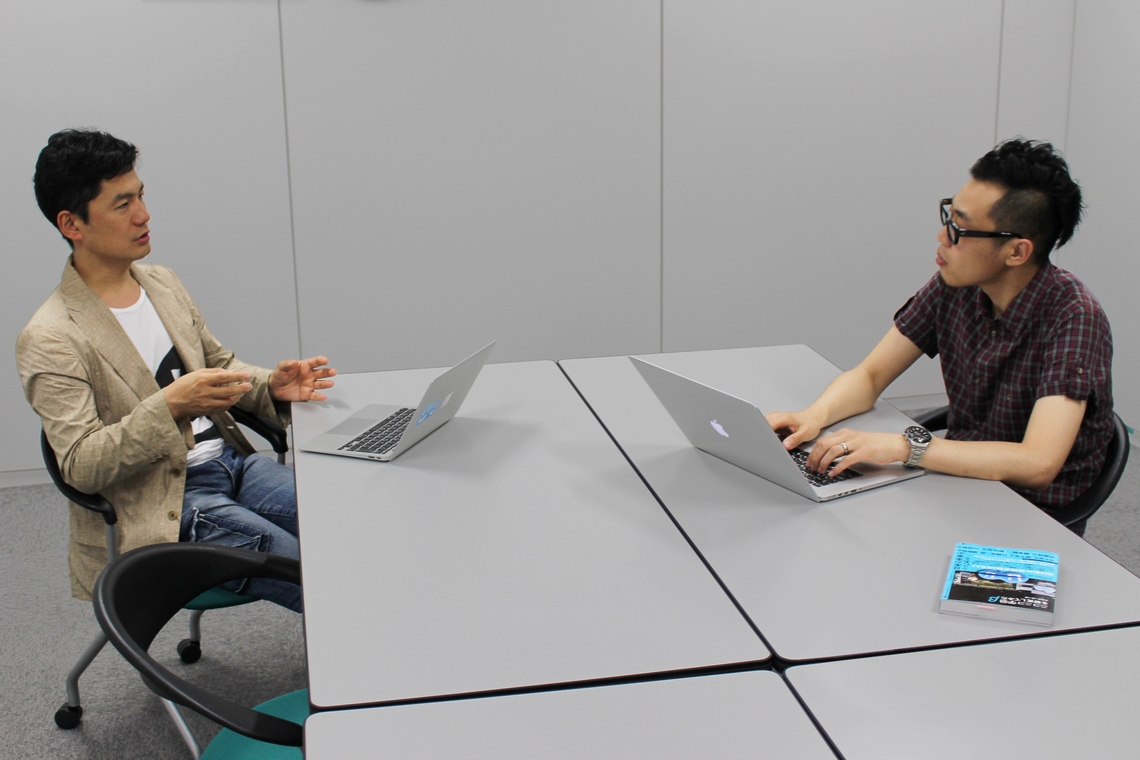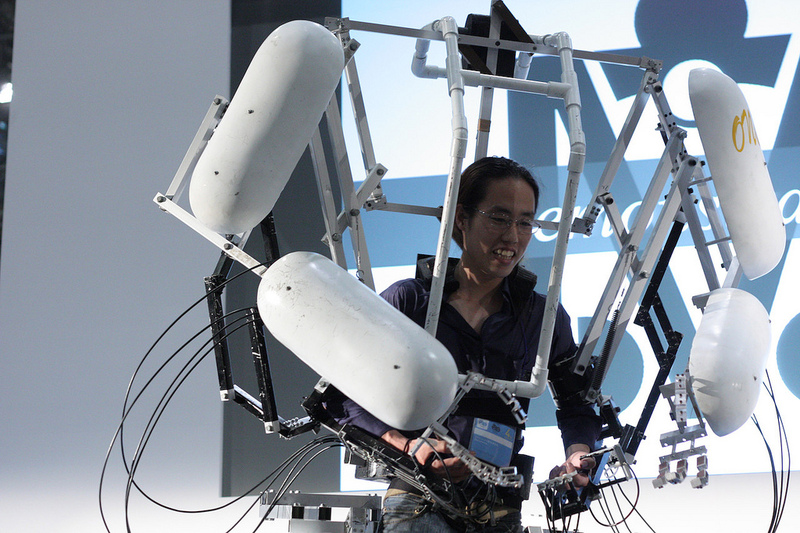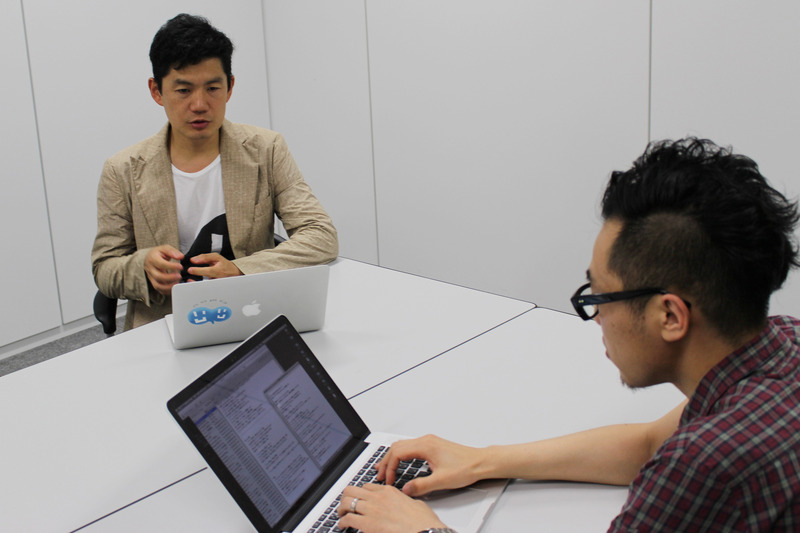Note: This website was automatically translated, so some terms or nuances may not be completely accurate.
Koichiro Eto × Yasuhiro Tsuchiya: Part 1 "Those who choose to be researchers as a way of life are the wild researchers."

Koichiro Eto

Yasuhiro Tsuchiya
Dentsu Inc.
For this edition of "One-Click Radius," planner Yasuhiro Tsuchiya spoke with Koichiro Eto, Executive Committee Chair of the Nico Nico Gakkai β. In Part 1, he discusses the history of Nico Nico Gakkai β from its launch to the present, along with its underlying philosophy.

Initially, the purpose was to research Niconico Douga.
Tsuchiya: First, I'd like to ask about "Nico Nico Gakkai Beta." Why did "research" and "Nico Nico Douga" come together?
Eto: We often say "Nico Nico Gakkai Beta exists to promote user-participatory research," but that idea wasn't there from the start. It actually began with a connection to Dwango, the company operating Nico Nico Douga, and the idea of creating a space to advance research and development together. Dwango had individual activities like study sessions led by their in-house engineers, but they didn't host any developer events open to the public. Then, during a conversation with Mr. Chino, Dwango's CTO, I asked, "Don't you connect with external parties for research and development?" He replied, "We haven't had opportunities like that before." So, I proposed, "Why don't we create a space for researchers and Dwango to collaborate?"
Tsuchiya: So that's how it came about. And that's when the concept for the Nico Nico Gakkai Beta began.
Eto: Initially, the purpose was "researching Niconico Douga." Since many people were conducting research related to Niconico Douga—like video search and analysis, or systems for easily creating videos—we thought creating a research group focused on Niconico Douga could be interesting. However, that alone wasn't enough motivation to create a new academic society. From the start, we decided it should be a society involving researchers, companies, and users. Then, Mr. Masataka Goto from the National Institute of Advanced Industrial Science and Technology (AIST) suggested making it a user-centered society. I was initially resistant to the user-centered idea. Creating a user-centered conference meant building an entirely new type of conference, and I could easily imagine how challenging that would be. That said, this proposal gained significant support from many people, and it became the fundamental axis. So, I coined the term "user-participatory research" and launched the Nico Nico Gakkai Beta as a "platform to promote user-participatory research."
Tsuchiya: I see. When was that?
Eto: Around September 2011. We held the first symposium in December 2011. It was structured in five parts: the first four sessions featured professional researchers presenting their work and leading discussions, while the fifth session allowed "wild researchers" from the general public to present their own research.
Tsuchiya: I watched the first symposium too, and I thought there were so many people doing interesting research. Who came up with the name "Wild Researchers"?
Eto: Kazuhiko Yatsutani (Associate Professor, Faculty of Fine Arts, Tokyo University of the Arts; developer of the pet email software PostPet). "Wild [something]" originally came from a tag used on NicoNico Douga. For example, videos uploaded anonymously that clearly look like they were made by a pro would get tagged as "Wild Pro." Apparently, there's a scene in Pokémon where "a wild Pokémon appears," and that's said to be the origin. Also, there's Lévi-Strauss's book The Savage Mind, and people ask, "Is that the origin?" When I want to sound cool, I say yes (laughs).
Incidentally, the "wild" in "wild animals" is "wild," but the "wild" in "The Savage Mind" is "savage," meaning "barbaric" or "ferocious." The English translation for "野生の研究者" was initially "savage researcher," but considering the connotations, it's now "wild researcher."
Whether professional or amateur, anyone who chooses the path of a researcher is a wild researcher.
Tsuchiya: At the Niconico Academic Society β, you hold events and symposiums. What kind of research is popular?
Eto: Last year, the insect session received high praise. Two researchers studying myrmecophiles—organisms that live with ants—and researchers studying grasshoppers and tardigrades presented. Among them, grasshopper researcher Kotaro Maeno was particularly fascinating. He's a skilled speaker and creates beautiful slides.
 |
| On the right is grasshopper researcher Kotaro Maeno Urd |
Tsuchiya: Is he also a wild researcher?
Eto: Mr. Maeno currently holds the prestigious position of Hakubi Researcher at Kyoto University, a rare and high-level role. But at the time of his presentation, he was unemployed. If we define a "wild researcher" as someone who isn't officially a researcher but still conducts research, then he was definitely one. But even now that he has a job, I still think he remains a wild researcher. The term "wild researcher" is vaguely defined. For example, someone might be a researcher by profession but hide that fact to pursue entirely different research independently. Or someone might work at a research institute, doing that as their job, but research unrelated topics on their days off and publish findings.
Tsuchiya: That's certainly true. It's different from the definition of an amateur, too.
Eto: So, for us, "whether professional or amateur, someone who chooses the life of a researcher is a wild researcher." Regardless of whether they get paid, I think it's appropriate to call someone who just does their own research on their own a wild researcher.
Tsuchiya: Do these wild researchers volunteer to present at events like the Niconico Gakkai Beta symposiums? Or do the organizers specifically invite them to present?
Eto: Both. The basic structure of Nico Nico Gakkai Beta is invited talks plus general presentations. The general presentations are a slot open to anyone who wants to present, which we call "Research Madness."
Tsuchiya: So it's like a lightning talk format (short presentations with a strict 5-minute time limit).
Eto: We originally discussed doing lightning talks. But we decided to make the presentation time shorter than 5 minutes—just 3 minutes—so technically, it's not a lightning talk. For presentations shorter than a lightning talk, we call 1-minute presentations "madness," so that's how we arrived at the name "Research Madness."
Initially, we considered something like NHK's "Nodo Jiman" (a singing contest), where a bell might ring to end a presentation after one minute depending on its content. But considering the burden on presenters, I'm glad we didn't adopt that idea.
Tsuchiya: So there's a "Madness" format! Presenting at Niconico Gakkai Beta seems like a great way for interesting research to gain traction and spread widely. Have any of the research projects actually been put into practical use?
Eto: Skeletronics, the exoskeleton robot, has become a corporation and is preparing to go on sale. That's fantastic.
Tsuchiya: With Skeletronics, it's great that even if you're not sure what it's for, it's just plain cool. I hear it got a lot of attention at this year's South by Southwest too. It's big and eye-catching, and everyone seemed pretty amazed.
 |
| Skeletonics at the 2nd Symposium |
Eto: Also, speaking of robots, there's Bushido. It's a robot control software recently released by SoftBank Group. People often ask, "Haven't any startups emerged from NicoNico Gakkai beta?" While there aren't that many, these two are standout examples I definitely want to highlight.
Presentations actually become more interesting when you fit them into a format
Tsuchiya: What motivates independent researchers to present their work? In the old shareware culture, for example, there was the idea of "people using what you made and being happy about it."
Edo: First, there's the joy of having many people see your work. And I think there's also the satisfaction of having professional researchers see your presentation.
Tsuchiya: Among the presentations at Nico Nico Gakkai Beta, what research did you personally find interesting, Mr. Eto?
Eto: There are so many! First, the "100 Research Presentations in a Row" at the first symposium was really fun. The format involved five professional researchers each presenting 20 of their own studies. Since researchers create and present various things as part of their work, they can easily have around 100 studies to present. When they carefully select and present just 20 from that pool, you see the connections—like "I gained this insight from this study, then did this next research, which ultimately led to this result." That's what makes it interesting.
I believe presentations become more engaging when they follow a specific format. For example, TED uses a format where one story is presented in 15 minutes. Trying out this "100 Research Presentations" format was actually incredibly interesting.
Tsuchiya: There was actually a videothis yearsummarizing the technical papers from SIGGRAPH (the computer graphics division of the US computer society). It was a series of short clips, each about 10 seconds long, compiled into a roughly 3.5-minute video covering the technical papers presented at this year's SIGGRAPH. Papers alone can be hard for non-experts to grasp, but seeing them summarized in this format made it much easier to understand and really interesting.
Eto: That's probably close. The paper format itself has been evolving bit by bit. In recent SIGGRAPH papers, they include a figure before the abstract, so just looking at that figure gives you a good idea of what the paper is about.
Tsuchiya: I see. I don't have experience writing papers and presenting at conferences... but last year, I happened to attend WISS (the Human-Computer Interaction Research Society) and listened to presentations. There were so many fascinating studies; it was incredibly stimulating. There was even that NicoNico-style laughter—it was really fun. At that time, I remember Mr. Eto saying, "NicoNico Gakkai Beta is essentially WISSx" (referencing how conferences worldwide inspired by TED's concept are called TEDx). So, is WISS's influence really that significant?
Eto: Yes, that's right. WISS has a culture where everyone collaborates to innovate the conference format itself.
For example, since the 90s, we've had a chat screen next to the presenter during talks, allowing everyone to chat while listening. In typical presentations, Q&A happens at the end, marking the first interaction between the audience and presenter. But by introducing chat, audience members can interact with each other during the presentation itself. As a result, more interesting and higher-quality questions emerge during the Q&A. I found this really fascinating.
Then there are presenters who use a gamebook format, where the slides themselves contain choices. When users select an option, the presenter proceeds with, "Alright, then I'll talk about this next."

Over the past two or three years, the impression and atmosphere surrounding NicoNico has changed.
Eto: Around 2011, we used Niconico Live for a symposium broadcast. We switched from Ustream to Niconico Live because the chat discussions at WISS were so engaging, and we wanted to extend that experience. But honestly, there was a lot of opposition back then. Thinking about that, I really feel the situation has changed.
Tsuchiya: In what ways do you feel it's changed?
Eto: Back in 2011, if you suggested, "Let's live-stream the conference on NicoNico Live," there was significant opposition. People said things like, "That's unacceptable," or "Our institute's policy won't allow it." Nowadays, you don't really hear people saying, "I won't participate because it's NicoNico Live."
Tsuchiya: Was that because of concerns like, "If it's on NicoNico, I might get attacked by weird anonymous people"?
Eto: Put simply, yes. Back in 2011, that was still the prevailing feeling.
Tsuchiya: Now streaming is commonly used even for corporate presentations, and more individuals are doing Nico Live, so the resistance has faded, right?
Eto: Over the last two or three years, the impression and atmosphere surrounding NicoNico has changed. I think the impact of "NicoNico Chokaigi" was huge. Prime Minister Abe taking the stage definitely made a big impression.
Tsuchiya: Initially, it had a strong "born from 2channel" image, but now it's really become its own unique culture, hasn't it?
Eto: What surprised me about these societal shifts was the recent Ministry of Internal Affairs and Communications call for research proposals titled "Seeking Original Thinkers." It's an initiative where the ministry allocates budget to original ideas. While various opinions have emerged, there hasn't been as much strong opposition as I expected. It really made me think, "Ah, this is the era we're in now." There's been an initiative called the "Uncharted Software Creation Project" for some time, and some people have been saying others should do similar things. But now that the Ministry of Internal Affairs and Communications is actually doing it, it feels like a huge shift.
( To be continued)
Interview Location: National Institute of Advanced Industrial Science and Technology (AIST)
Was this article helpful?
Newsletter registration is here
We select and publish important news every day
For inquiries about this article
Back Numbers
Author

Koichiro Eto
Principal Researcher, National Institute of Advanced Industrial Science and Technology (AIST) / Executive Committee Chair, Nico Nico Gakkai Beta / Media Artist. Completed doctoral program at the University of Tokyo Graduate School of Information Science and Technology. Doctor of Information Science and Technology. Nico Nico Gakkai Beta received the Good Design Award and the Ars Electronica Award. Major publications include Patterns, Wiki, XP; Researching Nico Nico Gakkai Beta; and Evolving Academia.

Yasuhiro Tsuchiya
Dentsu Inc.
zero/Dentsu Lab Tokyo
Creative Technologist / Researcher
After working at an advertising production company, joined Dentsu Inc. in 2006. Assigned to the CX Creative Center in 2021. Engaged in research and development of products centered on fields such as biosignals and robotics, aiming to develop and implement "slightly futuristic communication" utilizing technology.

